| |
Recuperating Sea Turtles Are Stars at the South Carolina Aquarium
By Tom Adkinson
CHARLESTON, SC – Of the 5,000 animals at the South Carolina Aquarium, sea turtles are the superstars. That’s because they are patients on the road to recovery from illness or injury, and everyone loves a back-to-health story – even if the animal isn’t particularly cute and cuddly.
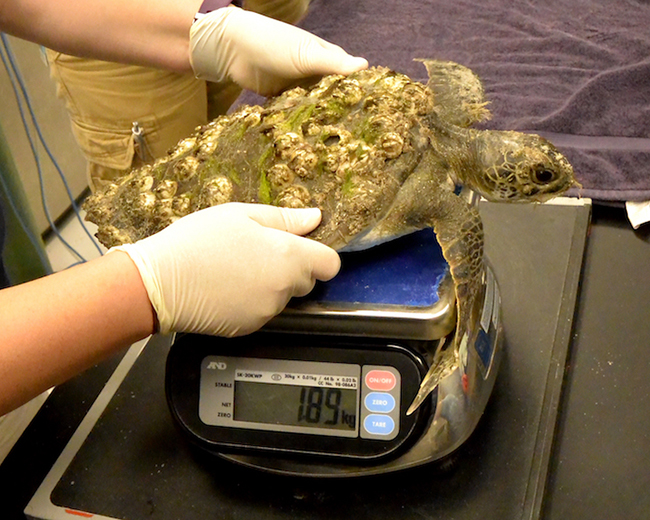 Gil, a green sea turtle, gets weighed and examined at the South Carolina Aquarium in Charleston. Image by South Carolina Aquarium. -- Image by Tom Adkinson
Gil, a green sea turtle, gets weighed and examined at the South Carolina Aquarium in Charleston. Image by South Carolina Aquarium. -- Image by Tom Adkinson
|
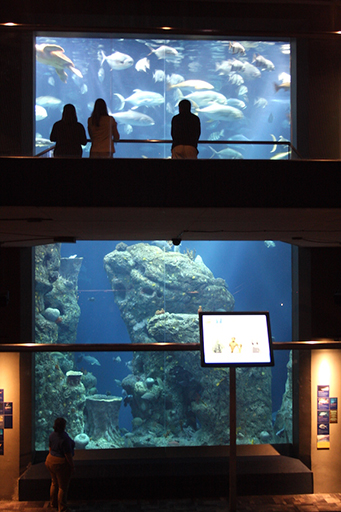 The 385,000-gallon Great Ocean Tank is home to many species of fish and a 220-pound loggerhead sea turtle named Caretta. Image by South Carolina Aquarium -- Image by Tom Adkinson
The 385,000-gallon Great Ocean Tank is home to many species of fish and a 220-pound loggerhead sea turtle named Caretta. Image by South Carolina Aquarium -- Image by Tom Adkinson
|
|
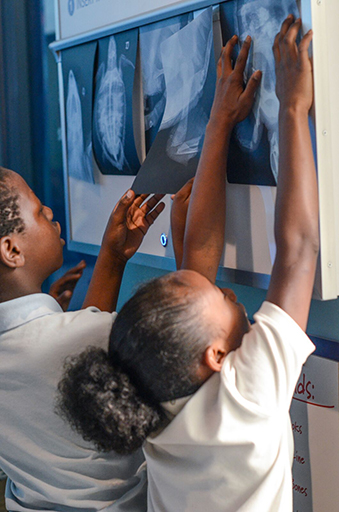
The Zucker Family Sea Turtle Recovery lets guests sample veterinarians’ tasks, including reading x-rays. Image by South Carolina Aquarium - Image by Tom Adkinson |
The aquarium, located right on Charleston Harbor, opened in 2000, and it quickly took on an unexpected mission. A call came in to help a stranded and sick loggerhead sea turtle that eventually was named Stinky.
|
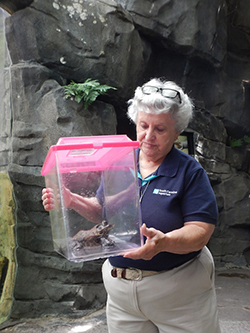
Aquarium staffers stroll among guests to show off animals such as a juvenile alligator and this hefty bullfrog named Jeremiah -- Image by Tom Adkinson
|
A basement space became the Sea Turtle Hospital, and Stinky was the first of more than 220 sea turtles that have been rehabilitated and released. Through the years, special tours of the hospital became a popular add-on attraction for the aquarium, but space was tight and patient volume was substantial.
The solution was construction of a large and permanent space, the Zucker Family Sea Turtle Recovery, which opened in 2017. It’s on the main floor in a prominent location, and an extra ticket no longer is required to see the patients and the veterinarians and technicians who nurse them back to health.
It took more than five years to design and build the combination exhibit/hospital, and now, because the aquarium is Charleston’s most visited attraction and is featured in “100 Things To Do in Charleston Before You Die,” legions of people every year learn how these majestic animals get ill or injured and understand the hard work required to help them. The average hospital stay is nine months.
“We’re likely saving more turtles through awareness and education than we are through the individual patients we rehabilitate because education is a critical piece to saving any species,” said conservation programs manager Kelly Thorvalson, noting that loggerhead sea turtles are South Carolina’s state reptile and an indicator species of both land and sea ecosystems.
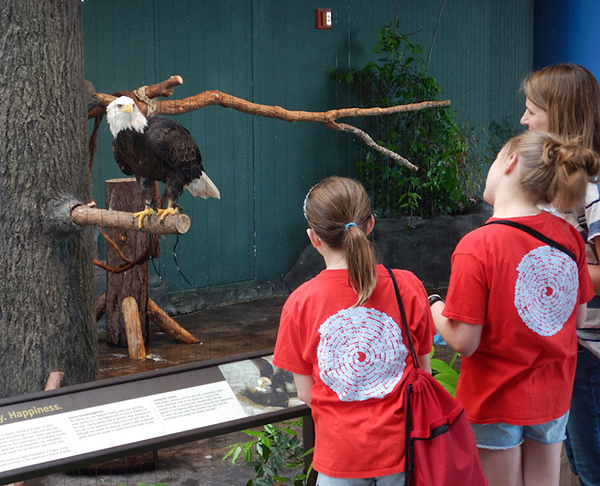 A bald eagle, a former patient at the American Eagle Foundation in Pigeon Forge, Tenn., is a popular attraction -- Image by Tom Adkinson
A bald eagle, a former patient at the American Eagle Foundation in Pigeon Forge, Tenn., is a popular attraction -- Image by Tom Adkinson
|
One fun aspect of the Zucker Family Sea Turtle Recovery is that it lets you pretend to be a veterinarian, even to the point of reading x-rays, learning about sea turtle surgeries and, of course, seeing sea turtles that are gaining strength while living in special recovery and exercise tanks.
When you tear yourself away from the sea turtles, the aquarium tells you a broad story of South Carolina’s habitats and wildlife.
Up in an area devoted to South Carolina’s mountain region (yes, South Carolina has some fine Appalachian territory) are otters, trout and a non-releasable American bald eagle that came from the American Eagle Foundation in Pigeon Forge, Tenn. In the coastal plain area are some critters best seen behind glass – alligators and rattlesnakes, for instance.
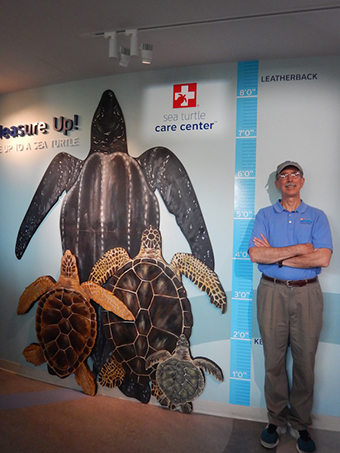 A human taller than six feet still is a shorty compared to a loggerhead sea turtle - Image by Tom Adkinson
A human taller than six feet still is a shorty compared to a loggerhead sea turtle - Image by Tom Adkinson
|
|
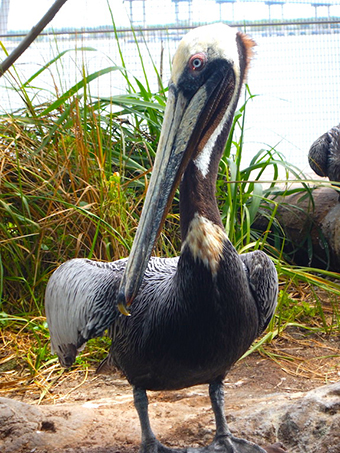
A pelican stares down a visiting photographer from its home in a breezy saltmarsh aviary that offers views of Charleston Harbor - Image by Tom Adkinson |
A breezy area devoted to the saltmarsh ecosystem houses herons and pelicans and includes a 6,000-gallon tank with rays, hermit crabs and other creatures. This exhibit also provides a great view of Charleston’s famous Ravenel Bridge. You may see a gigantic container ship or a U.S. Navy vessel pass right by you.
Back inside, the Great Ocean Tank holds 385,000 gallons of saltwater and is the best place to be mesmerized by circling fish of many species and a 220-pound loggerhead sea turtle named Caretta. That’s a bit of an inside joke for aquarium geeks because the scientific name for loggerheads is Caretta caretta.
Aquarium volunteers add a special touch, especially for kids, when they take certain animals into public spaces for closer looks. Don’t be surprised if someone passes by with a juvenile alligator, a snake or a bullfrog. Want to know the bullfrog’s name? It’s Jeremiah, of course.
After leaving the aquarium, you still may encounter its influence. Look on restaurant menus for a “Good Catch” message. That will mean the restaurant participates in an aquarium program that supports local fisheries and encourages consumption of sustainable and responsibly harvested seafood.
Trip-planning resources: SCaquarium.org, ExploreCharleston.com, DiscoverSouthCarolina.com and SeldonInk.com (for the “100 Things To Do in Charleston” book)
Published July 13, 2018 |

